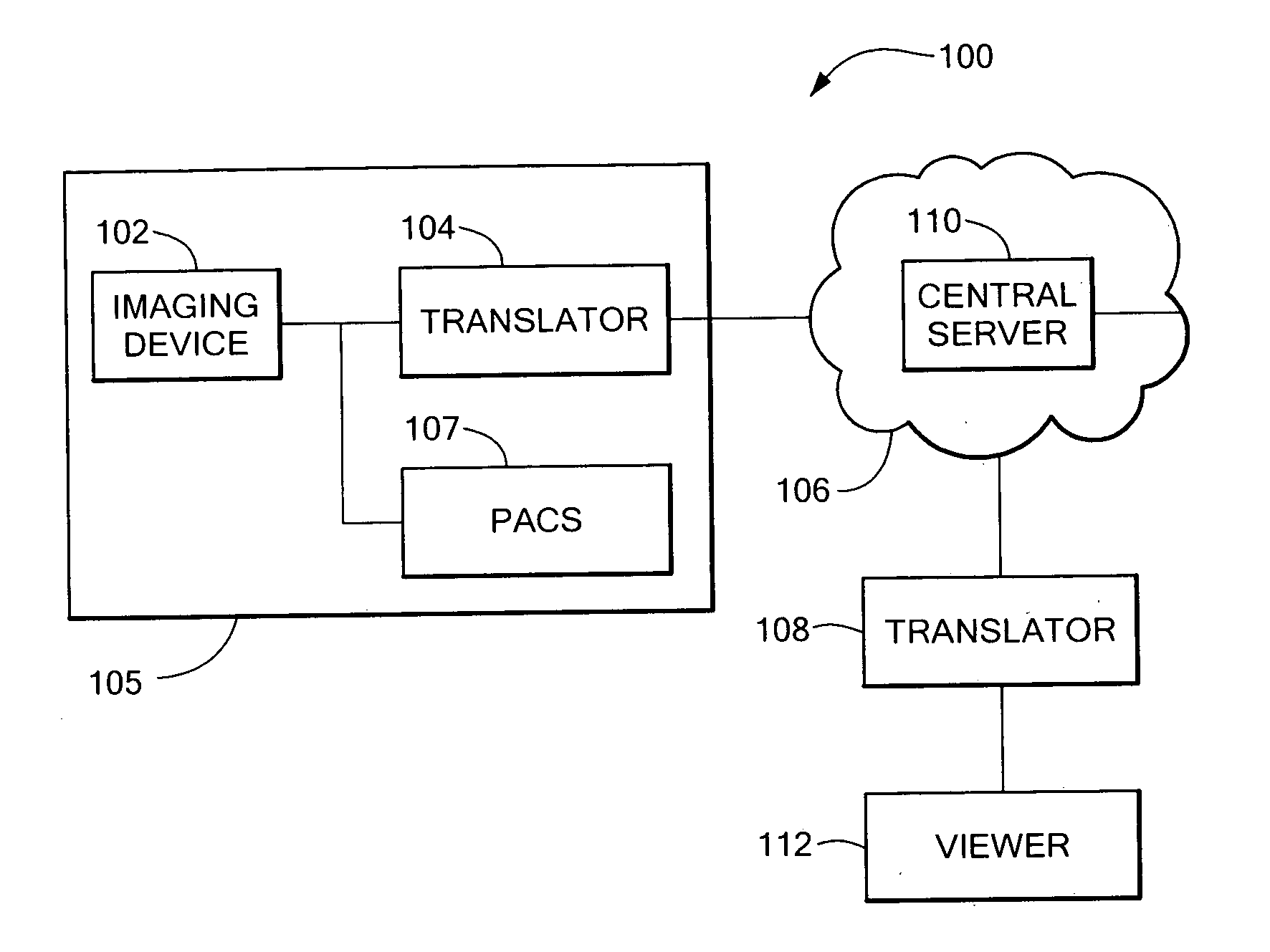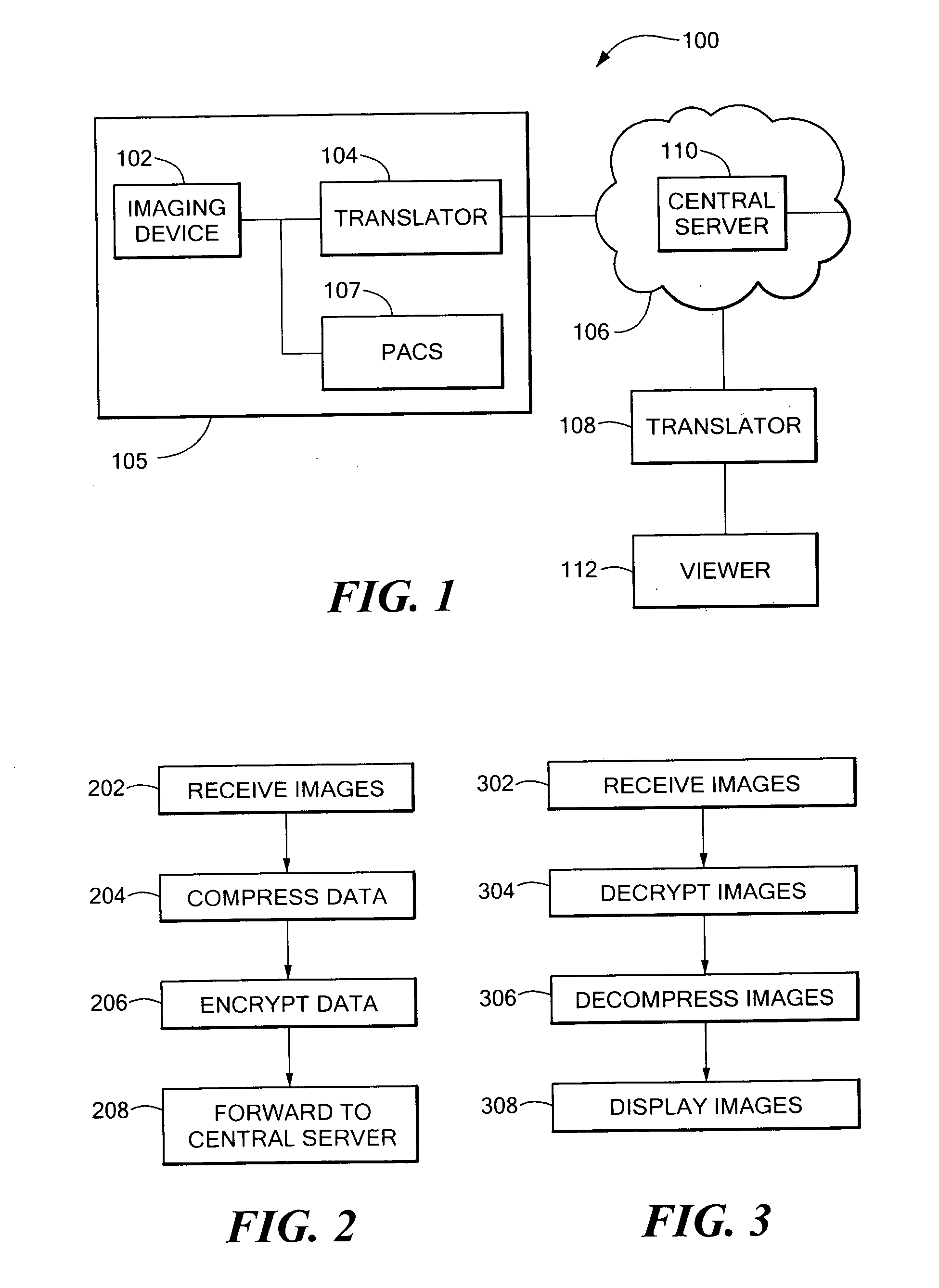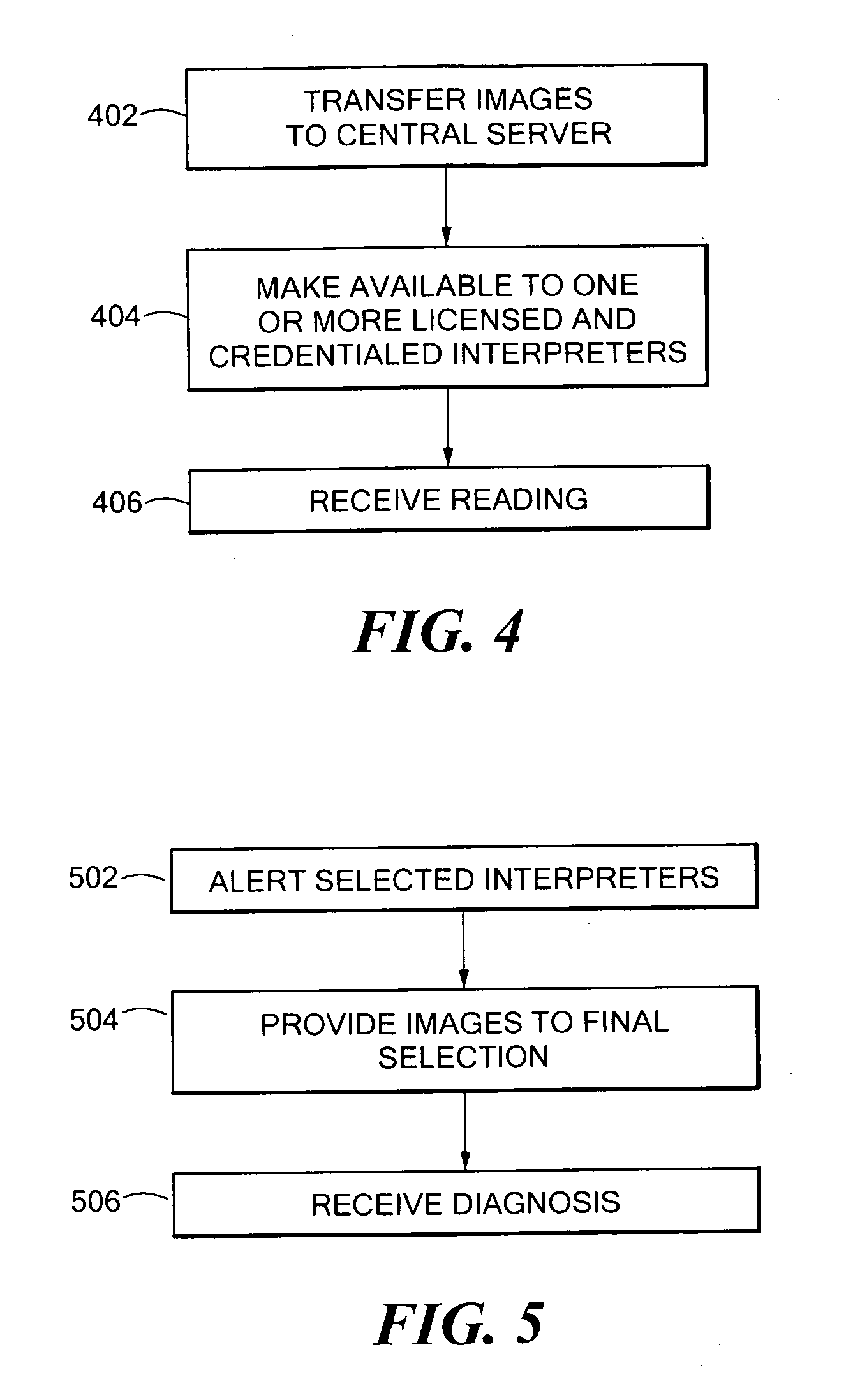Systems and methods for providing diagnostic imaging studies to remote users
a diagnostic imaging and remote user technology, applied in the field of electronic distribution of diagnostic image studies to remote users, can solve the problems of reducing the efficiency of interpretation of images, occupying a large storage space, and difficult to transmit electronically from one location to another, so as to reduce the time and expense of sending
- Summary
- Abstract
- Description
- Claims
- Application Information
AI Technical Summary
Benefits of technology
Problems solved by technology
Method used
Image
Examples
Embodiment Construction
[0023] Referring now to FIG. 1, in some embodiments of the present invention, the system 100 may include imaging device 102. Of course, an imaging device is not required and the system may receive images from any source. This imaging device 102 may be any type of modality that may take diagnostic images of a patient. For example, the imaging device 102 may be an MRI machine, a digital X-ray machine, a CAT scan machine or any other type device. In other embodiments, the imaging device 102 may be any type of imaging device whether or not it is used for a diagnostic image of the human or not. For instance, the imaging device 102 could be an electron microscope or the like. The imaging device 102 transfers the images to other devices in the internal network 105 at the location where the imaging device 102 is located. For instance the internal network 105 could be a local area network (LAN) that has a plurality of devices connected to it. For instance, the imaging device 102 could be con...
PUM
 Login to View More
Login to View More Abstract
Description
Claims
Application Information
 Login to View More
Login to View More - R&D
- Intellectual Property
- Life Sciences
- Materials
- Tech Scout
- Unparalleled Data Quality
- Higher Quality Content
- 60% Fewer Hallucinations
Browse by: Latest US Patents, China's latest patents, Technical Efficacy Thesaurus, Application Domain, Technology Topic, Popular Technical Reports.
© 2025 PatSnap. All rights reserved.Legal|Privacy policy|Modern Slavery Act Transparency Statement|Sitemap|About US| Contact US: help@patsnap.com



